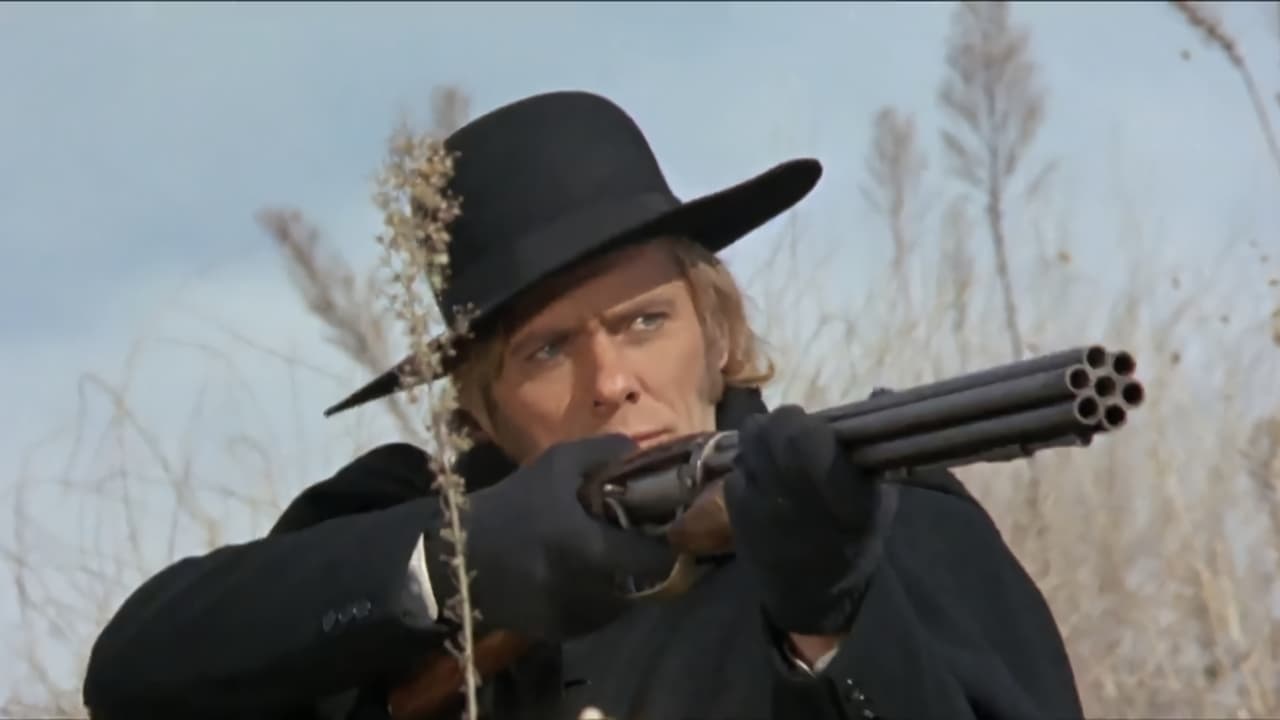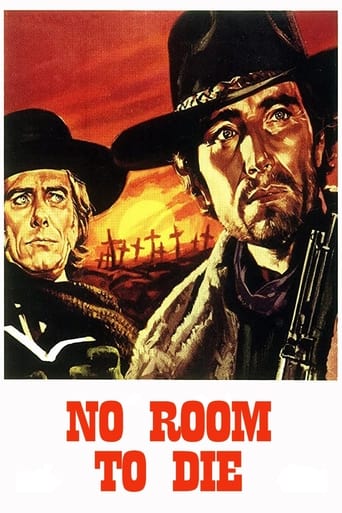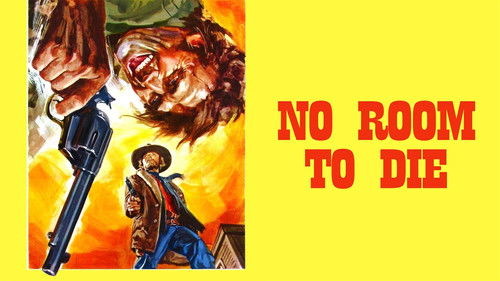


Really Surprised!
... View MoreOverrated and overhyped
... View Morebrilliant actors, brilliant editing
... View MoreThe biggest problem with this movie is it’s a little better than you think it might be, which somehow makes it worse. As in, it takes itself a bit too seriously, which makes most of the movie feel kind of dull.
... View MoreThis is an exciting film , plenty action , thrills , fights , and starked outdoors from El Lacio , Rome and De Paolis Studios . Two pistoleros called Johnny Brandon (Anthony Steffen) and Everett 'Bible' Murdock (William Berger) join forces to take down dangerous bandits , murderers and other scums . Brandon/Steffen is similar to Django , a fast-draw and silent gunfighter . Everett/William Berger is nicknamed The Preacher and dressed in black in Sartana- Sabata style , like a ¨Death Angel¨ , and he is wielding a six-barrel gun . They are two killer bounty hunters taking out outlaws who are wanted with fine prices on their heads in a small Western border town. The duo of bounty hunters take off an evil and mighty landowner (Riccardo Garrone) who carries out smuggling illegal of Mexican immigrants and confronting the hoodlums (Giancarlo Sisti, Roberto Messina , Emilio Messina) that work for him . Enjoyable Western follows the Sergio Leone wake , as it is proceeded in Spaghetti models . It's a moving western with breathtaking gunfight between the protagonists Anthony Steffen , William Berger against the heartless Riccardo Garrone , in addition a stirring ending fight in which takes place an impressive duel among three contenders in ¨The good , the bad , and the ugly¨ style . Acceptable action sequences with rousing attacks and spectacularly paced confrontation . Charismatic performance for the whole casting . The notorious Spaghetti actor , Anthony Steffen is good as Brandon . Anthony Steffen may be a name best remembered by Spaghetti Western aficionados, but in his day, from the mid-'60s to the early '70s, Steffen was one of the most popular actors of the genre - at the time cheap B movies, now revered cult classics . The handsome, Italian-born - actually at the Brazilian embassy in Rome - Antonio Luiz de Teffè von Hoonholtz began working in films as a studio messenger for Vittorio De Sica . From there, Steffen began acting in sword-and-sandal epics, later moving onto the Western genre , where he found his niche . Unlike fellow Spaghetti star Clint Eastwood, however, Steffen never became a top international box-office attraction .His acting is often accused of being wooden, but in many manners is ideally suited to playing the steely-faced gunslinger synonymous with the genre . His others successes include features as ¨Seven Dollars to Kill¨, ¨The last Mohican¨ or ¨The last Tomahawk¨, ¨Train for Durango¨, ¨Gentleman Jo¨ , ¨¨Stranger in Paso Bravo¨, ¨Garringo¨, ¨Four dollars for Django¨, ¨Shango¨, ¨Arizona colt¨, ¨Apocalypse Joe¨ and several others . Although he played other genres as Terror and Gialli , such as : ¨An angel for Satan¨ and ¨The night Evelyn came out of the grave¨ . And William Berger , the fair-haired Austrian leading man, who appeared in many spaghetti westerns between 1966 and 1987. He had a reputation for being a rebel and a vociferous anti-establishment figure . However , Berger's career was also at times interrupted by drug abuse. He played known Westerns as Face to face (1967), Keoma (1976) , Fast hand , The band of Jaider , Sabata , Chuncho , El Cisco , Today We Kill , Tomorrow We Die! , A Name That Cried Revenge. There appears as secondaries the habitual in Italian Western such as : Mario Brega , Giancarlo Sisti , Riccardo Garrone , and two gorgeous Eurothash girls : Nicoletta Machiavelli and Mariangela Giordano . The musician Vasili Kojucharov and Elsio Mancuso compose a nice soundtrack in Morricole style and well conducted , this turns out to be one of the most memorable parts of the movie; as it's full of enjoyable sounds and haunting musical background . The soundtrack and songs contribute tremendously to the atmosphere of the film, including an emotive leitmotif, the music score is perhaps the best aspect of this movie . And adequate and atmospheric cinematography in Eastmancolor and CinemaScope by Franco Villa . The motion picture titled ¨Une langue file de croix ¨or ¨Una lunga fila di Croix¨ or ¨Una larga fila de cruces¨ was well filmed by Sergio Garrone and with lots of zooms , difficult angles , foregrounds , and backgrounds . Sergio's direction is finely crafted , here he is more inclined toward violence and packs some thrills and action , but especially this exciting Western contains moving shoot'em ups and some gloomy scenes when a lot of Mexican people are massacred . Sergio serves as a classic example of a journeyman Italian exploitation filmmaker and freelance screenwriter . As Garrone penned a great number of screenplays and lack-luster films , working from the 60s in all kind of genres and B movies . He directed this embarrassing western , genre in which he would not only excel but one where he would spent much of the rest of his career . Sergio went on to helm several other spaghetti Westerns , many of them Spanish co-productions, that include Tre Croci Per Non Morire (1968) , Quel Maledetto Giorno Della Resa Dei Conti (1971) , Deguello (1966) also starred by Jack Stuart , Huracan Sobre Mexico (1967) and his greatest notoriety was the peculiar outing : Django il Bastardo (1969) . In 1974 Garrone directed the horror features as Le Amanti del Mostro (1974) and La mano Che Nutre la Morte (1974) , both of which performed Klaus Kinski . He made and wrote for everything from inferior sex comedies as La Clinica Dell'Amore (1976) , El Periscopio (1979) by José Ramón Larraz , to even Giallo , mystery thrillers such as : L'ultimo harem , La Pagella , Blonde Köder Kür den Mörder (1969) or Killer's Gold . Later on , Sergio Garrone directed nasty Naziexploitation or Porno-Nazis as Lager SSadis Kastrat Kommandantur (1976) and SS Lager 5: L'inferno Delle Donne (1977). And after writing the violent/erotic WIPs (women-in-prison) : Hell Behind the Bars (1984) and Detenute Violente (1984)
... View MoreExperience taught me that, in case of spaghetti-westerns, it's always useful and interesting to Google-translate the original Italian titles. For some reason, the international titles in English are either irrelevant (most titles refer to in one way or another to the character of "Django" because that was the biggest commercial success) or nearly not exciting enough. Please disregard the English titles "A Noose for Django" and "No Room to Die" as the original title literally translates as "A Long Line of Crosses", which is – in my humble opinion as a western fanatic at least – a much more exhilarating and meaningful title. That being said, "A Long Line of Crosses" isn't the prototypic kind of spaghetti western that I would recommend in case you're fairly new to the genre. The film contains a number of fantastic elements, including a massively high body count and a terrific use of filming location and camera angles, but writer/director Sergio Garrone's script is too often confusing, incoherent and (unnecessarily) complex. Admittedly I often couldn't quite figure out why certain things happened, why some of the characters kept on double-crossing each other, or why the enemies didn't kill each other much earlier. The poor English dubbing obviously didn't help, neither. I'm relatively sure that the main plot focuses on the rich and supremely evil Mr. Fargo (depicted by the director's brother) who runs the highly immoral but profitable business of illegally smuggling poor Mexicans across the Texan border. Once he cashed the little amounts of money these people own, he sadistically dumps them into a ravine. The large list of notorious outlaws that he works with lures two different bounty hunters to town. Johnny Brandon and Everett "Preacherman" Murdock have two completely different personalities, but their pistols are equally fast and deadly. They close a pact to hunt down all the wanted criminals together, but Brandon is a defender of human rights whereas Preacherman is simply interested in the rewards. I honestly wouldn't ponder too much about the plot and merely enjoy the grotesque violence and delightful spaghetti western trademarks. "A Long Line of Crosses" bathes in that typical raw and filthy atmosphere, with lots of nasty-looking gunmen sweating and stinking in the burning sun, and the number of thugs falling dead from the cliffs or to the ground is practically countless. Anthony Steffen and particularly William Berger give away adequate performances, but – as usual – I personally liked the bad guy the most. Garrone is definitely the least brilliant Sergio of his generation of Italian western directors (defeated easily by Sergio Leone, Sergio Corbucci and Sergio Sollima) but I still appreciate his movies very much.
... View MoreBounty hunter Anthony Steffen teams up with shifty, bible-toting rival William Berger, who dresses like a preacher and carries a shotgun with seven barrels, in order to take on a ruthless gang of human smugglers working the Mexican border.An entertaining, though somewhat standard-issue Italian western, this is well-made and fairly atmospheric, with a neat final gun-down. Steffen and especially Berger are pretty cool too, as is big Mario Brega (of Leone's Dollars trilogy among other films) finally getting to play one of the good guys!One interesting aspect of the film is the depiction of illegal immigration, the "coyotes", and their primarily well-to-do white enablers as a public nuisances that help in keeping poor Mexicans down. This is a point of view you'll never see in the scared, hypocritical film world of today.
... View MoreThis film was made in the same year as 'Django the Bastard', with the same director and the same actor in the title role. A Noose for Django feels a lot like an afterthought, and I wouldn't be surprised to find that is the case. This film doesn't benefit from as good a storyline as the aforementioned Spaghetti western, and it feels more like a film that has had the name 'Django' slapped on it to help it's selling prospects, as the title character feels very much like he's just been dropped into the plot. The plot highlights the antagonism between Mexicans and Americans in a story about smuggling illegal immigrants into an American township. Towards the start, we see a smuggler ditch his cargo in callous fashion. From there, we learn that there's a bounty on the heads of all illegal smugglers, and this attracts the bounty hunter Django to the fray in order to bring the men to justice. However, Django isn't the only hunter on their trail as he faces competition from other gunslingers. Well, I think this is the basic plot line; the muddled screenplay doesn't exactly make it easy to decipher exact plot details.A Noose for Django is one of the more difficult to find entries in the Django series, and that seems pretty apt it really isn't all that good. Naturally, the film features a plethora of violent gun fights and a handful of gritty characters; but nothing is really explained or done in any great detail, which really leaves the film feeling rather flat. Anthony Steffen gives a performance that is, in my opinion, better than the one he gave in Django the Bastard (albeit slightly); but it's spoiled by the fact that he's eclipsed by his rival bounty hunter and his very cool seven barrelled shotgun! Said gun represents what is probably the only real memorable thing about this film; which really says a lot for it. However, in typical Italian fashion; A Noose for Django compensates for its muddled and rather boring story with style. The atmosphere is dark and gritty and the locations, while obviously cheap, do help the film with regards to the atmosphere as it presents a very minimalist western style. Overall, I can't say that I liked this film very much and don't recommend tracking it down; although there may be something here for Spaghetti western fan.
... View More